Do you like housework? Housework is an essential part of our lives, but the way we do it varies from country to country. In this article, I would like to introduce you to some of the unique ways of doing housework that are associated with the Japanese way of life. Of course, ways of doing housework can vary by region and individual, but I’d like to describe the general methods that most Japanese people can relate to.
Doing the Laundry
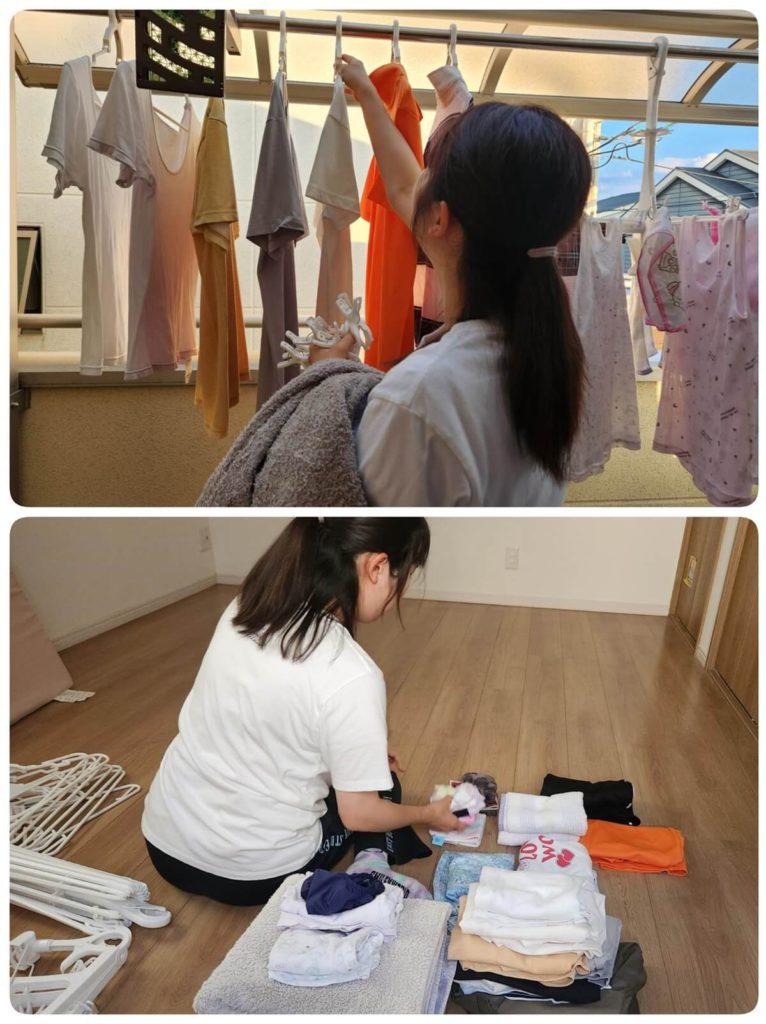
In Japan, most households have a washing machine, and the average family does laundry every day. However, not many families use a dryer, except on rainy days. Instead, the majority of people hang their clothes outside to dry. Even though hanging each piece of clothing on a hanger is a hassle, people don’t seem to mind doing it. Why do you think that is?
One reason is the smell of the sun, “ohisama-no-nioi” (お日様のにおい) in Japanese. “Ohisama” refers to the sun in a friendly way. When you hang clothes outside on a sunny day, you get not only the sterilizing effect but also a pleasant fragrance. Fluffy futons and pillows in particular, with the fresh smell of the sunshine, gave a beloved scent that any Japanese person can relate to.
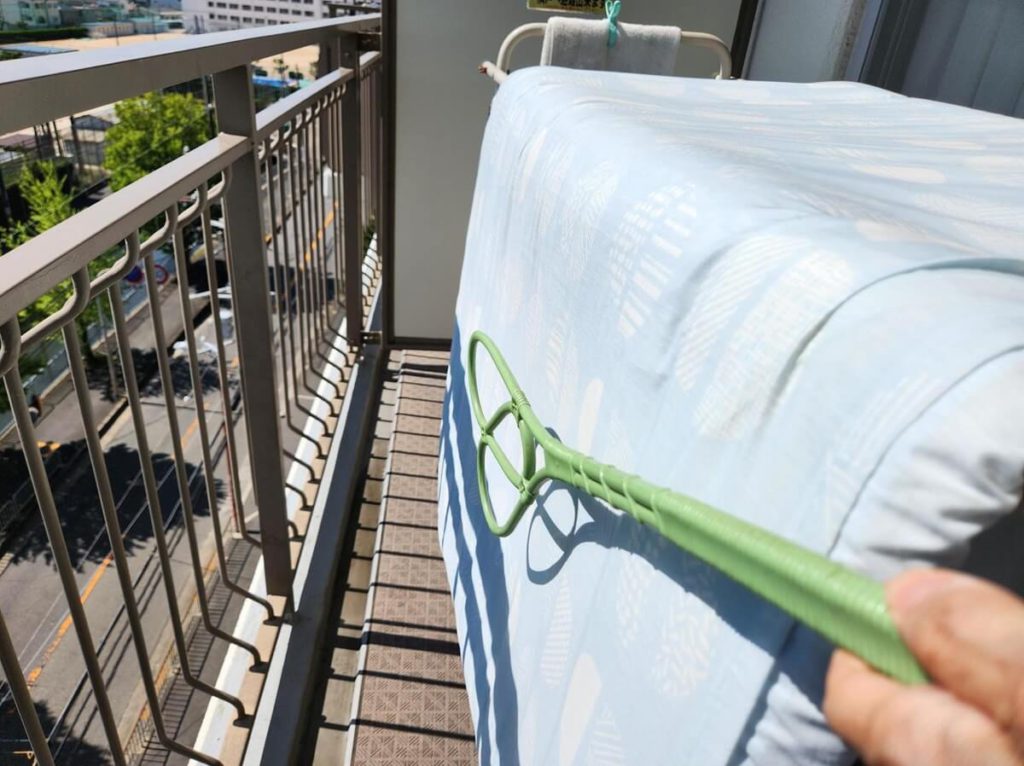
Another reason is that straightening out the clothes by hand when drying them eliminates the need for ironing. Needless to say, drying clothes outside is more eco-friendly than using a dryer. Some people even use the bathwater left in the bathtub for washing clothes to save water. This is possible because they do not use soap or wash themselves in the bathtub, so the bathwater remains clean.
In the past, it was common to see futons lined up on apartment balconies and hear the sound of people beating out the dust, but now many buildings do not allow futons to be hung over the balcony railing because it spoils the appearance. While futon dryers are becoming popular, many people living in detached houses still prefer to dry their futons in the sun.
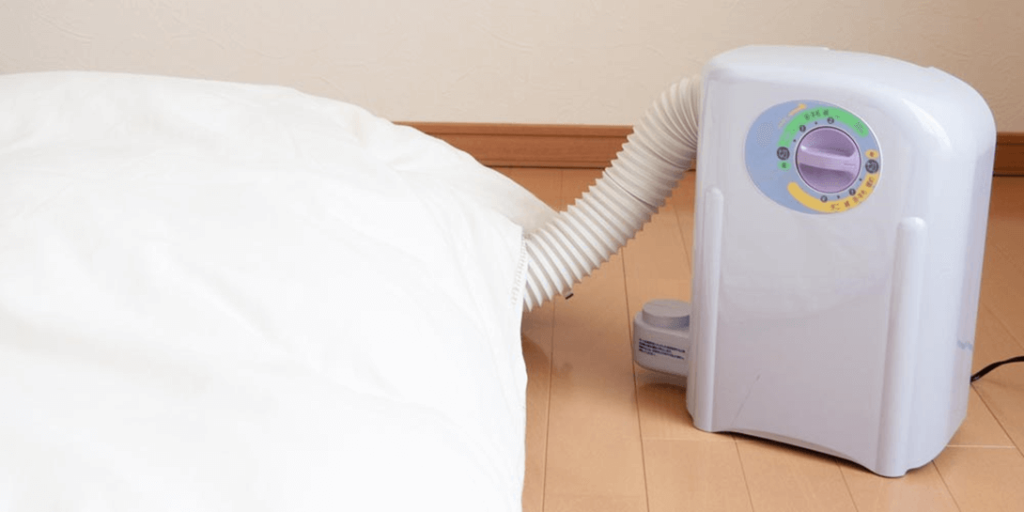
The practice of hanging laundry outside is deeply ingrained in Japanese people’s minds, and it is based on a lifestyle that is always mindful of the weather. Morning news programs even display things like a laundry index along with the weather forecast. People always keep an eye on the sky, washing large items when the weather is stable and drying laundry indoors when it looks like rain.
Koromogae (衣替え) / Seasonal Wardrobe Change
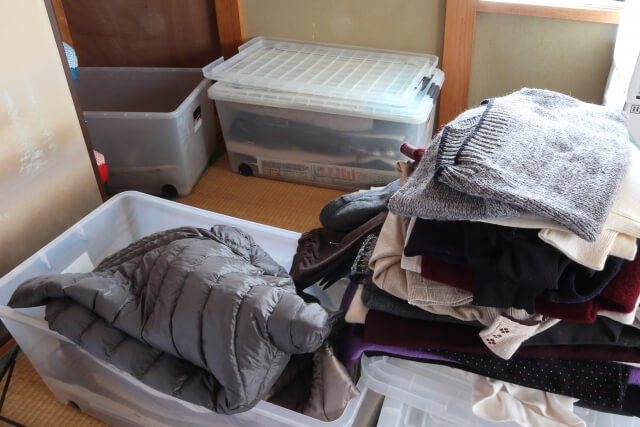
One of the customs that is highly related to climate and seasonal changes is “koromogae,” or seasonal wardrobe change, which has a long history, dating back to the Heian period (794-1185) when it was a courtly event. Traditionally, people switch from wearing winter to summer clothes on June 1 and from summer to winter clothes on October 1. This tradition has been passed down through generations and is still widely observed in schools and companies, where people switch their uniforms all at once. However, with the current climate change, people are becoming more flexible rather than strictly adhering to traditional dates.
“Koromogae” is one of the toughest household chores. In spring, people put away their winter clothes and bring out their summer clothes, and vice versa in autumn. These days, it is a headache to decide when to do “koromogae” as the seasons do not change as gradually as they used to.
Our lifestyle has changed over the years, and the number of families doing “koromogae” is decreasing. However, there are still several benefits of “koromogae.” Firstly, clothes should be cleaned and mothballed when they are put away in storage boxes, which helps keep the clothes in good condition for a long time. Additionally, “koromogae” allows you to go through all your clothes, so you can get rid of what you don’t need and also remind yourself of what you already have.
All in all, “koromogae” is closely linked to our sense of seasonal change and is an essential practice for maintaining your clothes, as well as providing an opportunity to tidy up your wardrobe, resulting in a more comfortable living space.
Ōsōji (大掃除) Thorough House Cleanup
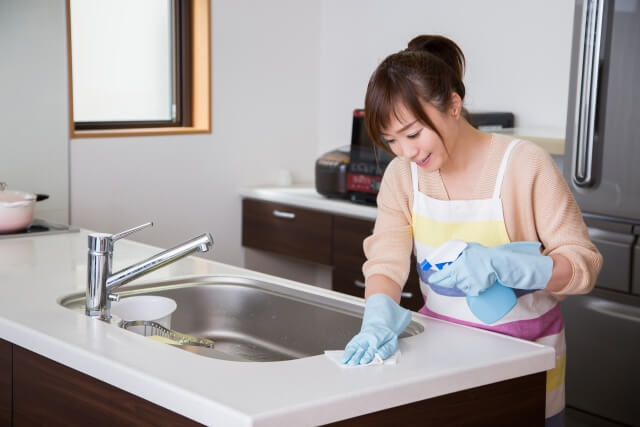
Another distinctive Japanese household chore is “ōsōji”, which means a deep cleaning of the entire house. While “spring cleaning” is common in Western countries, “ōsōji” is usually done at the end of the year in Japan. This practice is deeply rooted in Japanese culture and has both practical and spiritual significance.
The origin of the year-end “ōsōji” is said to be the “susuharai” (soot sweeping) event, which has been passed down since the Heian period (794-1185). In the past, houses had hearths and “kamado (wood stove),” and the inside of the house was covered in soot. “Susuharai” is a sacred custom of cleaning the soot accumulated over the year and purifying in the house with the aim of welcoming the New Year’s deity (年神様 Toshigami-sama), who brings fortune during the New Year. Traditionally, “susuharai” took place on December 13, which falls on a great auspicious day in the lunar calendar and was known as “shōgatsu koto-hajime” (正月事始め): the day to start preparations for the New Year. Now, “susuharai” is more commonly seen in shrines.
Overall, “ōsōji” comes from this ritual practice and is based on the idea that New Year’s Day is an important day for the Japanese people. By cleaning the entire house before putting up a series of New Year’s decorations, people can start the New Year with a renewed spirit.
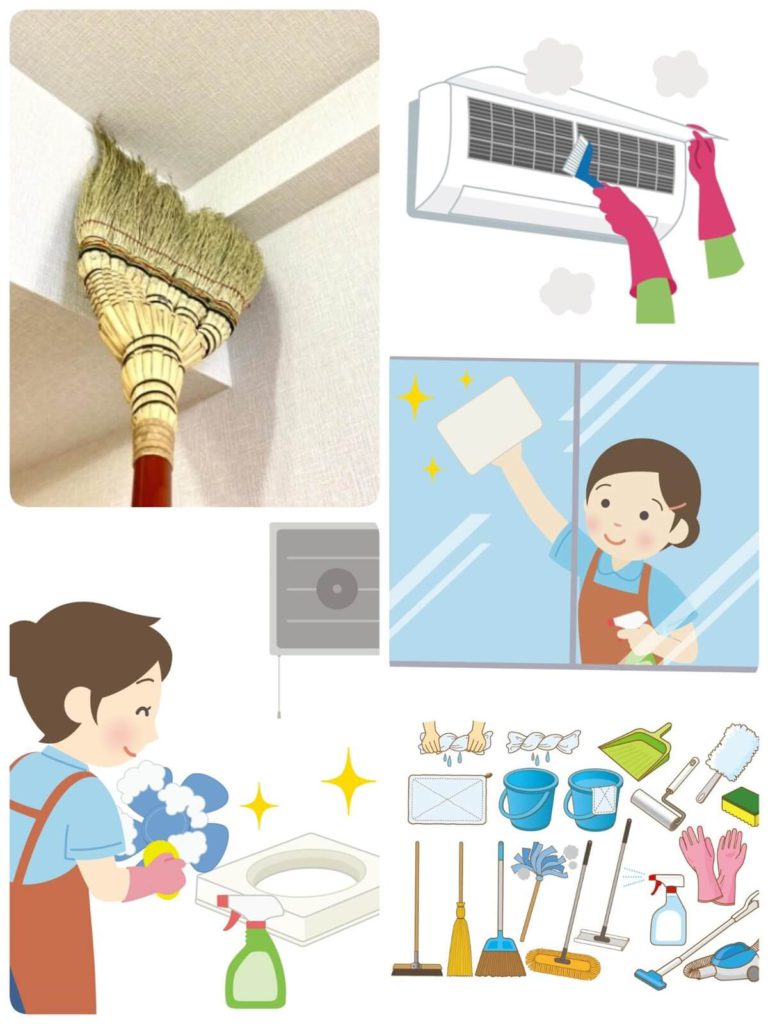
In the Showa period (1926-1989), all of the family members were often involved in “ōsōji,” taking all the fittings and tatami mats out of the house and cleaning every nook and cranny inside the house. Tatami mats were dried in the sun to prevent mold and maintain freshness. Also, kitchens and bathrooms were carefully cleaned because there is a belief that deities or “kami” can reside there to protect the household and ensure its prosperity.
Nowadays, with the change in architectural styles, lifestyles have become more diverse, and people have different ways of cleaning. Some people even hire cleaning staff. However, the idea of a deep cleaning of an entire house at the end of the year is a practical custom to start the New Year fresh with a clean slate.
Conclusion
Our lifestyles have changed dramatically in recent decades, and the way we do housework has changed accordingly. However, the traditional culture rooted in each country and region still influences many people’s daily lives. It is fascinating to learn about their traditional methods, which are full of wisdom for people to maintain clean and efficient lifestyles.
I hope that this article will help you understand Japanese housework and help you gain a deeper understanding of Japanese culture and lifestyle.
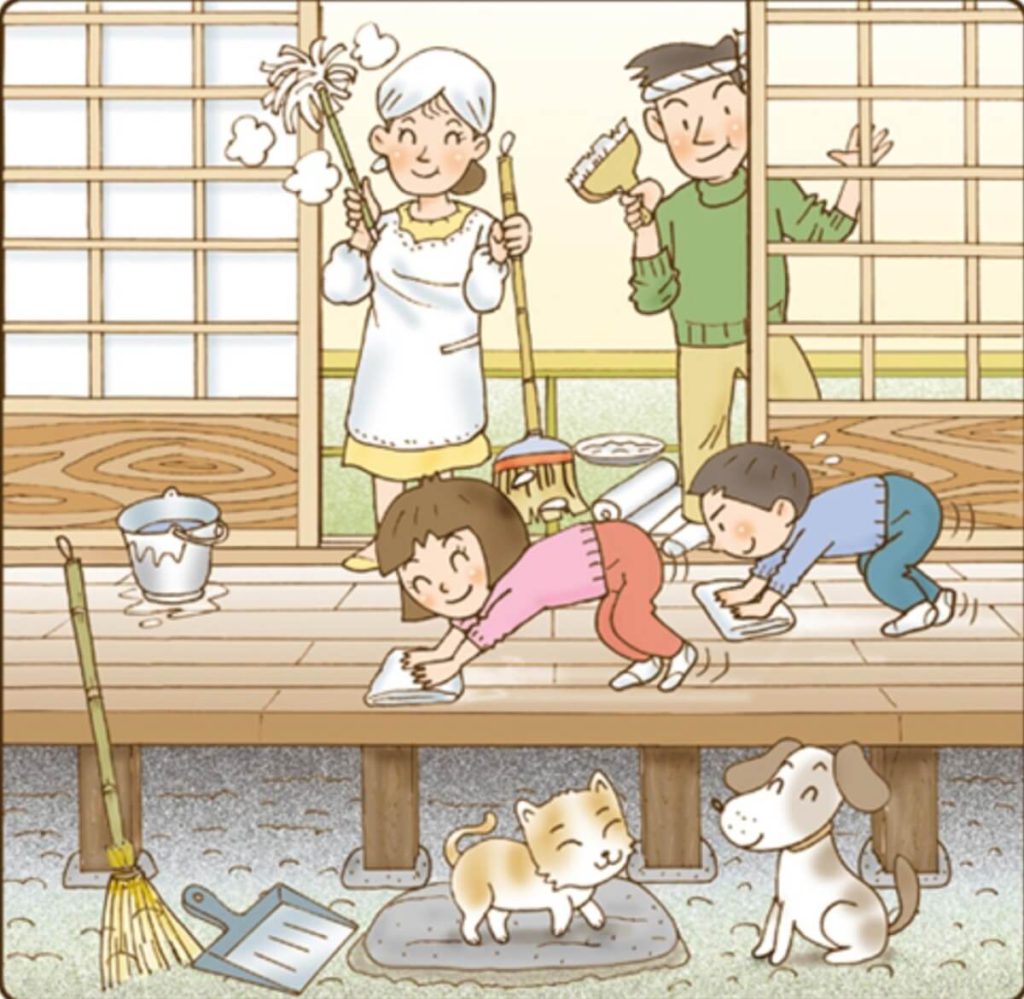
Lives in Takatsuki city, Osaka. Has been engaged in English for work and fun for years.

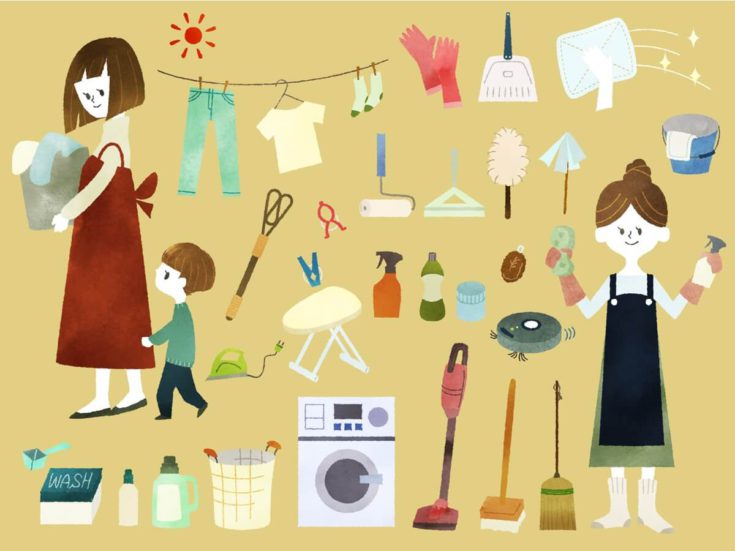



 HTJ has a YouTube page! Check it out
HTJ has a YouTube page! Check it out
Amazing article, Mami! I loved seeing how your household chores reflect the values of Japanese culture!
Hi Nathan! Thank you for your comment! As I was writing it, I realized a lot of household chores are closely linked with the customs and traditions that have been passed down. We should know about and appreciate them.